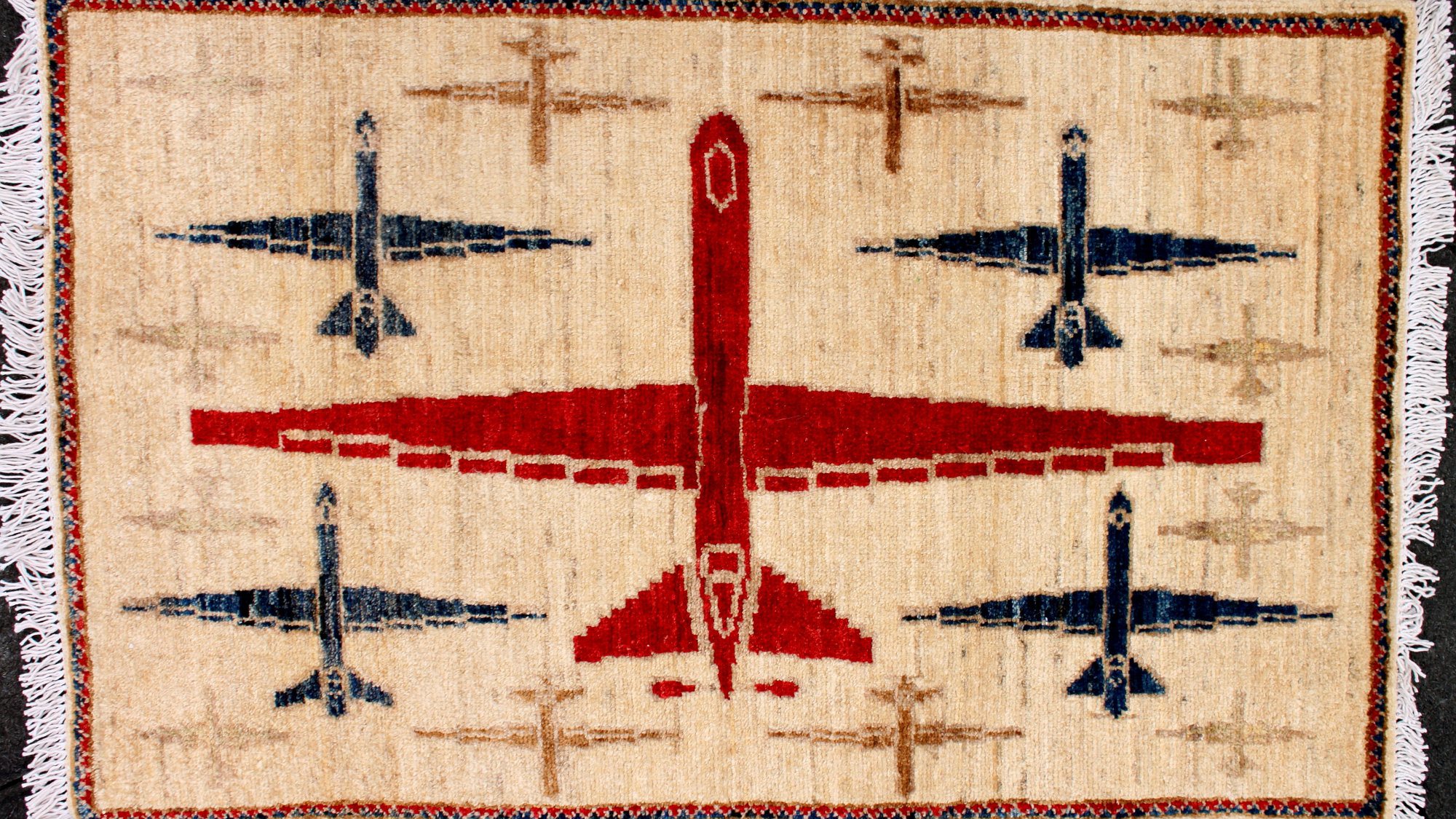Though Afghan weavers have been creating “war rugs” or “war carpets” for decades, it’s nonetheless disquieting to see modern warfare like drones creep into their designs; a sobering affirmation to the rest of the world that the damaged inflicted by the stealth technology has become commonplace in that region of the world. A recent article in Color Magazine, picked up by Quartz, reports that rug collector and dealer Keith Sudeith has seen a rise in drone-themed rugs:
“’A super subtle drone war rug. Dated 2014. Vegetable dye, super quality wool. Totally unique and timely piece.’ In December 2014, Sudeith posted online images of a new set of drone-themed rugs, selling for a few hundred dollars. He calls them the product of a ‘collaborative process’ with a family in Pakistan, based on designs that have previously emerged in the market.”
Considering the ongoing program of US drone strikes in Pakistan, these new patterns are likely to pick up as a popular theme among war rugs creators and their collectors. According to an October 2014 update from the UK-based Bureau of Investigative Journalism, more than 1,000 civilians have been killed in Pakistan by drone strikes over the past ten years, around one-fifth of them children.
The New York Times, reporting on one of Sudeith’s gallery shows in 2005, traced the commodified artistic practice back to the Soviet invasion, when weavers began “incorporating images of guns, tanks and warplanes.” The rugs garnered attention (and controversy) in the U.S. after 9/11 for depicting the attack on the World Trade Center.
It’s hard not to find the rugs, which so plainly portray the brutal world the weavers live in, troubling. But it somehow gets even worse:
The majority of weavers, says Sudeith, were Afghan refugees living in Pakistan who, regardless of their former careers back in Afghanistan, had become “a sort of captive labor force.”
This may be the dark side of war rugs. Although Afghan weavers are traditionally women, Western collectors and dealers only deal with intermediaries, so it’s difficult to verify who actually makes the rugs, and under what circumstances. The US Department of Labor, for example, lists those made in Afghanistan and Pakistan among the crafts that may involve child and forced labor. Sudeith himself never met the Afghan family that makes most of his rugs. “The brass ring for war rug people is to speak with weavers and hear their stories and motivations,” he confesses, “So far, it’s been impossible.”
Image: Warrug



